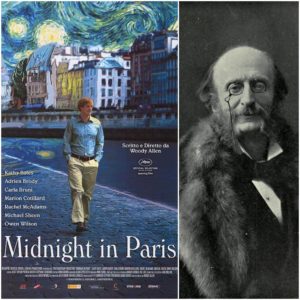
Opera Meets Film: How Offenbach Classics Immerse The Audience In ‘Midnight in Paris’
By David Salazar“Opera Meets Film” is a feature dedicated to exploring the way that opera has been employed in cinema. We will select a section or a film in its entirety, highlighting the impact that utilizing the operatic form or sections from an opera can alter our perception of a film that we are viewing. This week’s installment is “Midnight in Paris.”
Woody Allen’s masterpiece “Midnight in Paris” doesn’t really have much opera in it. In fact, there isn’t a single operatic voice that beams over the film’s nostalgic soundscape.
All we get is an adaptation of Offenbach’s Barcarole from “Les Contes d’Hoffmann” and the Can-Can from “Orphée aux Enfers.”
That’s it.
But it’s perfect for the film’s purpose. The movie is all about nostalgia and the desire to interact with past to escape the “mundanity” of the present. Gil, played by Owen Wilson, is a lover of 1920s Paris and is fortunate enough to get his dream of living in that time period once the clock strikes midnight.
Throughout his adventures, he interacts with the great artists of the epoch, including Ernest Hemingway, the Fitzgeralds, Pablo Picasso, Gertrude Stein, Man Ray, Salvador Dali, and Luis Buñuel, among others. He also falls for Adriana, who herself dreams of living in Paris’ “Belle Epoch.”
After adventures in the 1920s, Gil and Adriana get a chance to enter the “Belle Epoch.”
Music plays a vital role in establishing time period with Gil’s first interaction of the 1920s featuring Cole Porter at the piano with one of his compositions. When the time comes for the “Belle Epoch,” the couple’s arrival at Maxim’s is marked by the Barcarolle performed by musicians. Despite the fact that it is clear that their playing is not in sync with the music they are supposedly playing, the famed tune helps contextualize the time period. We believe the time period because we recognize the music as being of that era.
The “Can Can” furthers this immersion. It has always been connected with the Moulin Rouge and Allen cements this connection by giving the audience the expected.
It might not be the most subtle of creative decisions, but it is exactly what the film calls for in order to give its audience a true sense of immersion of the world it is entering.


